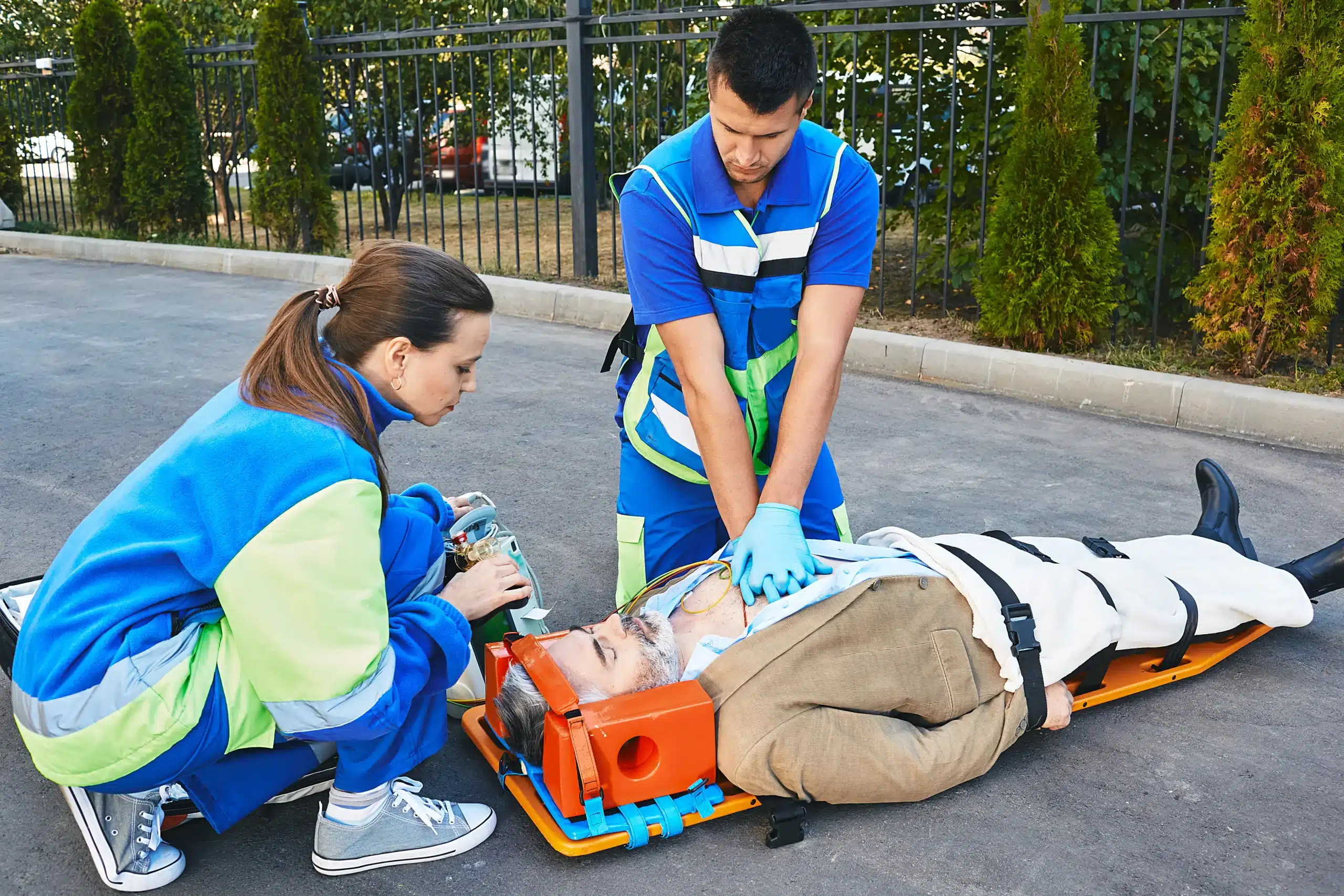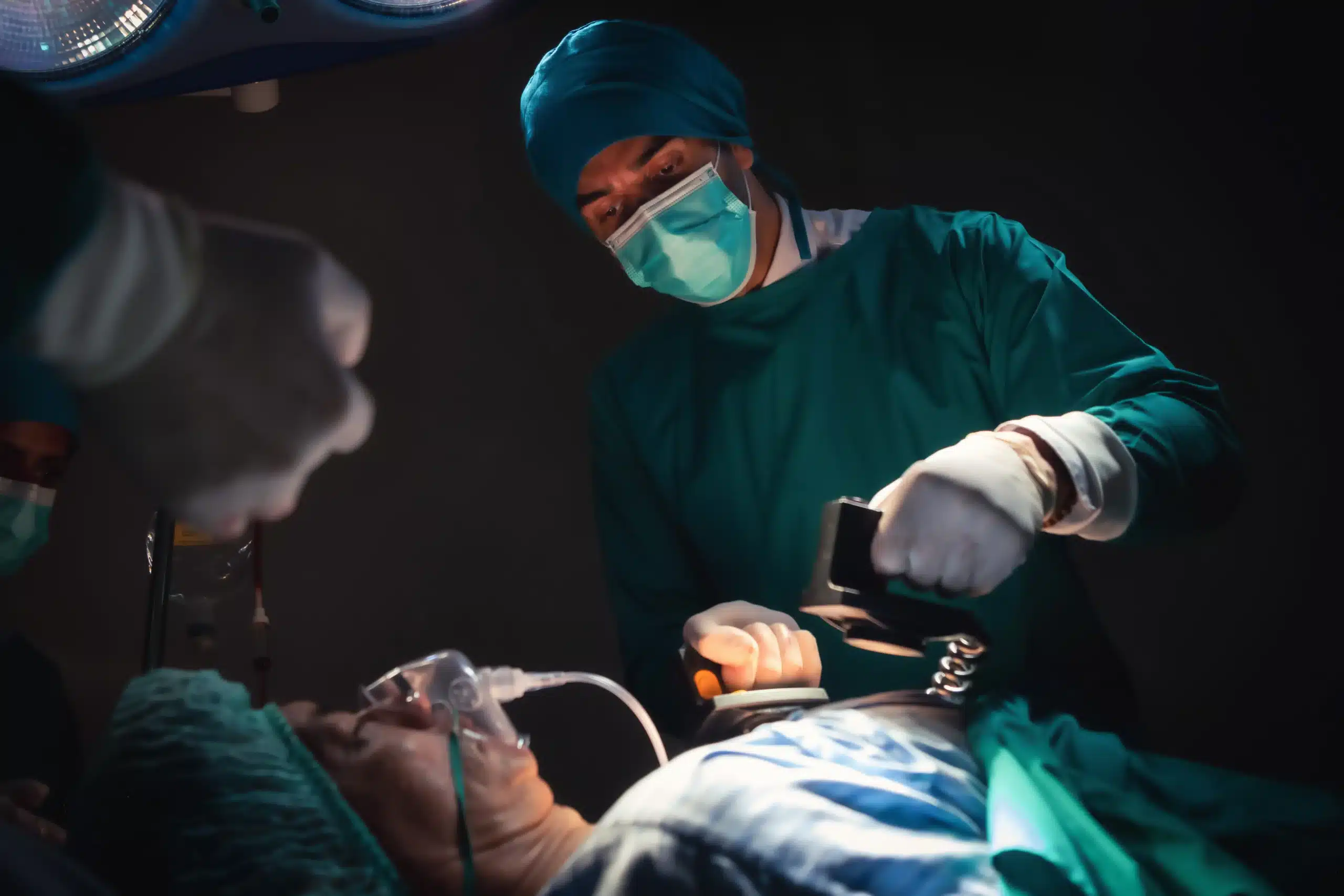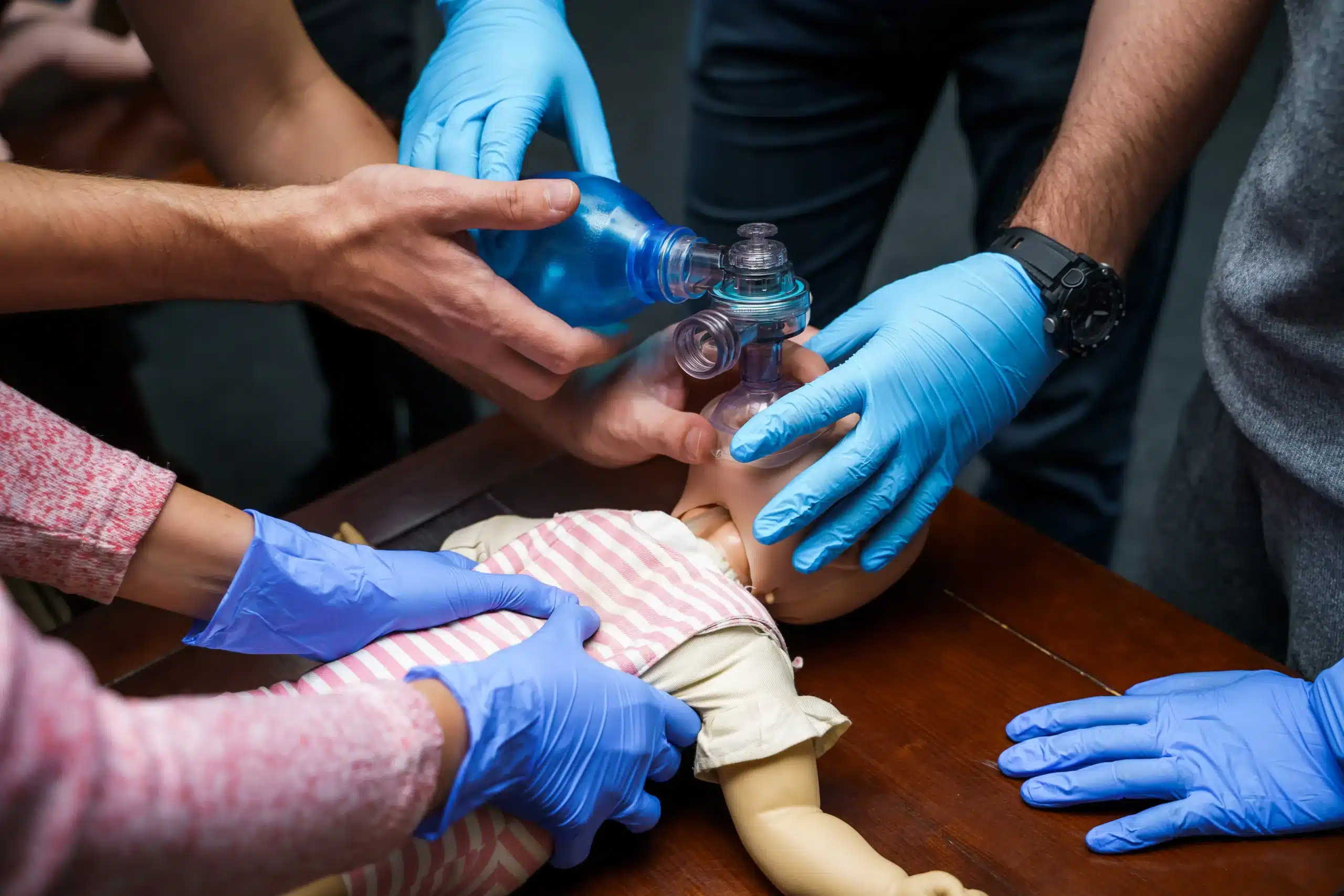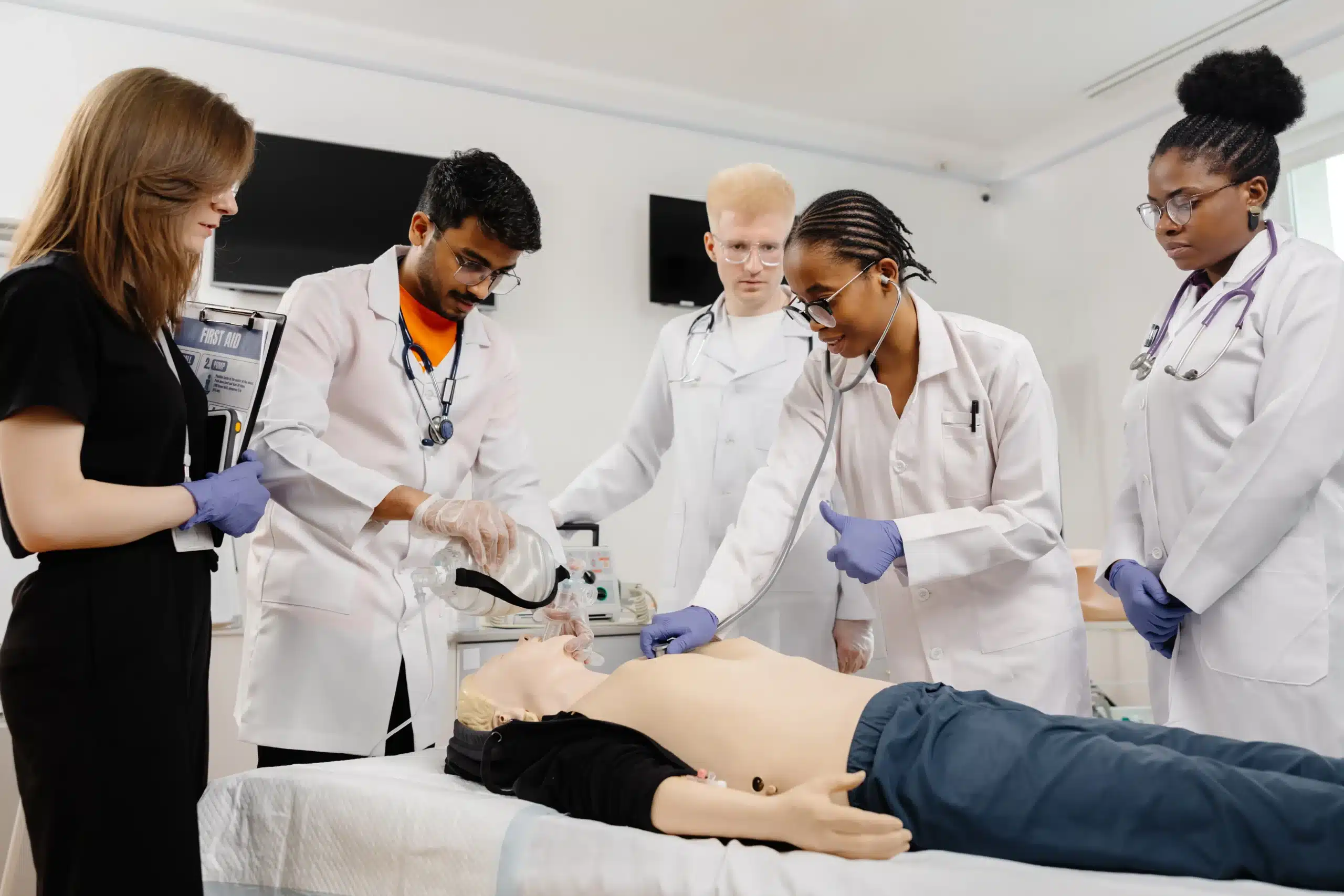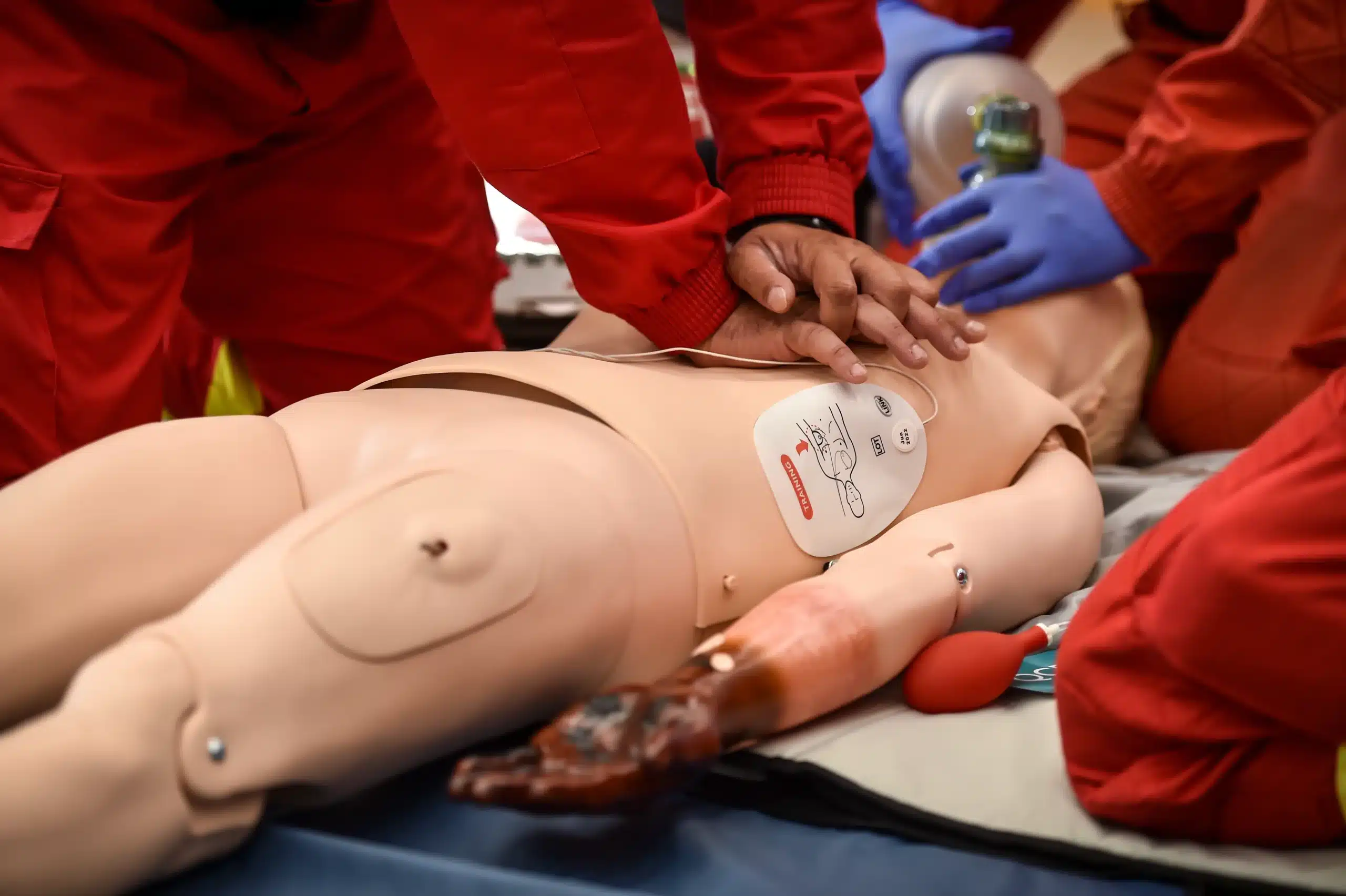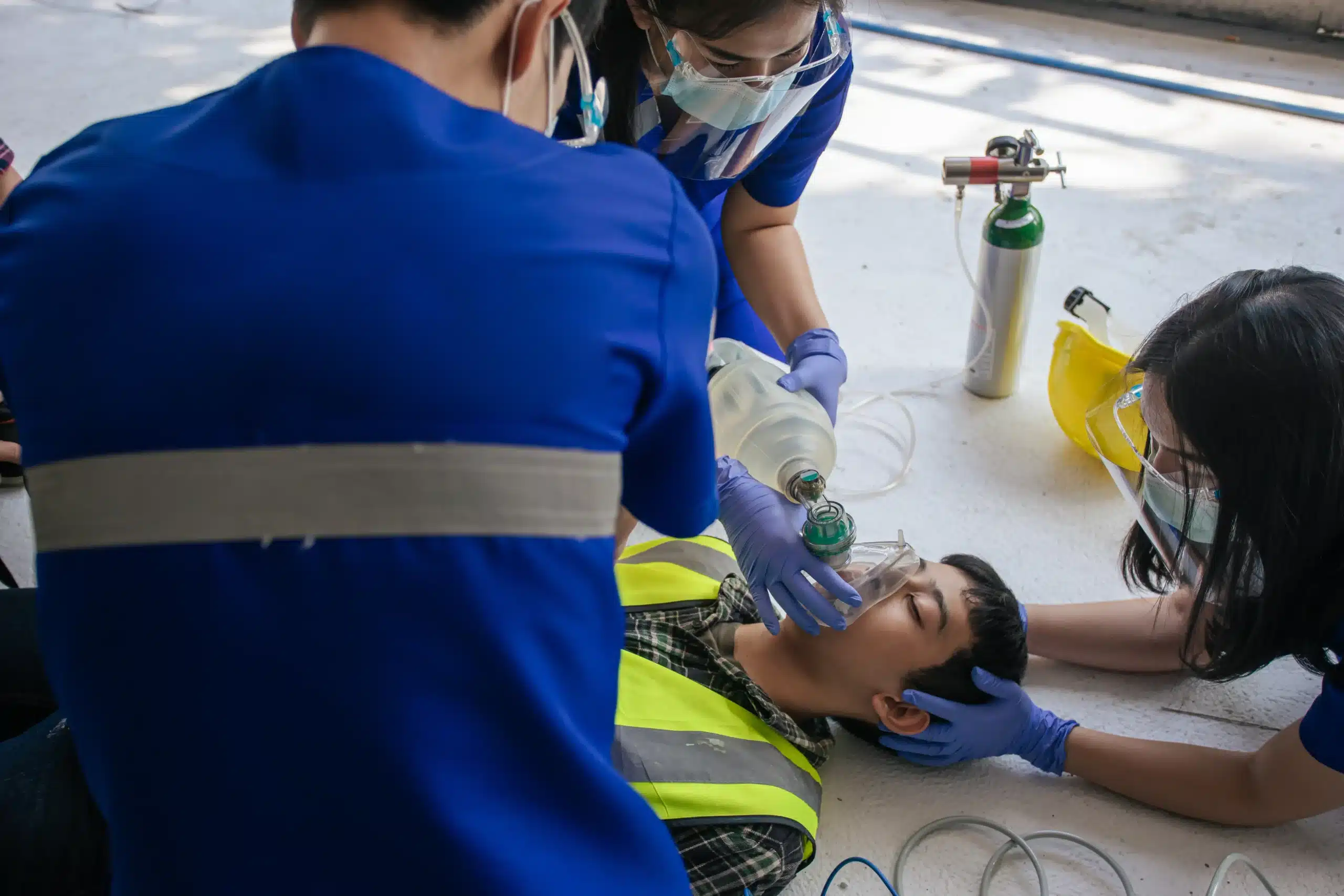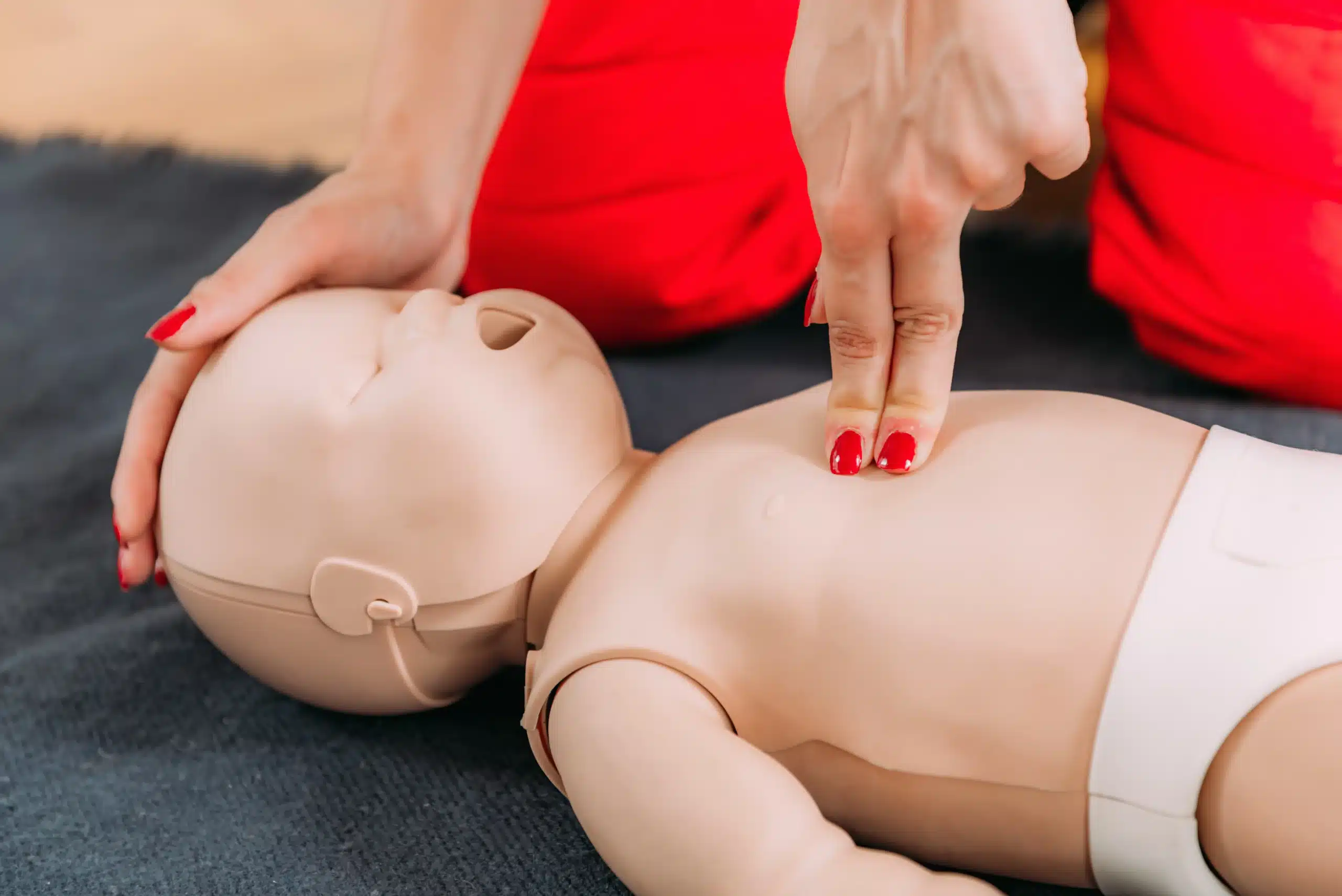Emergencies can happen anytime, anywhere. Would you know what to do? Learning BLS, or Basic Life Support, empowers you to respond effectively in critical situations, providing essential care during those crucial first few minutes. This comprehensive training goes beyond basic CPR, equipping you with the skills to handle cardiac arrest, respiratory distress, and obstructed airways. From healthcare professionals to everyday individuals, BLS certification is a valuable asset. If you’re searching for “BLS certification near me,” this guide will help you understand the importance of BLS, what the training involves, and how to find the right course for you. Let’s explore how you can become equipped to save a life.
Key Takeaways
- BLS certification provides comprehensive life-saving skills: It goes beyond basic CPR to include AED use and airway management, essential for healthcare professionals and anyone who wants to be prepared for an emergency.
- Finding the right course is key: Consider your learning style, schedule, and budget when choosing between online, in-person, or blended learning formats. Look for accredited courses with hands-on practice and a reputable provider like Safety Training Seminars.
- Maintain your skills through recertification: BLS certifications typically expire after two years. Stay up-to-date with the latest guidelines and techniques by recertifying to ensure you can respond effectively in critical situations.
What is BLS Certification & Why Do You Need It?
Knowing what BLS is, why it matters, and what it entails can help you decide if pursuing certification is the right step for you. Let’s break it down.
What is BLS?
BLS stands for Basic Life Support. It’s a critical training program that teaches people how to respond to life-threatening emergencies. BLS focuses on providing immediate care to victims experiencing cardiac arrest, respiratory distress, or an obstructed airway. It’s the foundation for saving lives in those crucial first few minutes. The training covers essential techniques like CPR (cardiopulmonary resuscitation), recognizing the signs of a heart attack or stroke, and how to use an AED (automated external defibrillator). These skills are based on established algorithms designed to maximize the chances of survival. For more information on the benefits of BLS training, visit ACLS.com.
What Will You Learn in BLS Training?
BLS training equips you with practical skills and the confidence to use them. You’ll learn how to perform high-quality CPR for adults, children, and infants, including how to use an AED effectively. Airway management techniques are also key, teaching you how to open and maintain a clear airway. Beyond the technical skills, BLS training emphasizes teamwork, communication, and following established protocols during emergencies. Whether you’re a healthcare professional or someone wanting to be prepared for anything, BLS training provides a solid foundation of life-saving skills. For a deeper look into BLS training, check out our guide on finding BLS training.
Who Needs BLS Certification?
While anyone can benefit from BLS training, it’s often required for healthcare professionals like doctors, nurses, paramedics, and other medical personnel. Many healthcare facilities mandate BLS certification as a condition of employment. It’s also highly recommended for those working in fields like childcare, education, and fitness, where they might encounter medical emergencies. If you’re in a position where you could be the first responder to a medical crisis, BLS certification is invaluable. Our BLS renewal guide offers more insights into who needs this certification.
Common BLS Misconceptions
One common misconception is that BLS is simply basic CPR. While CPR is a significant part of BLS, the training covers a much broader scope, including advanced airway management techniques and using specialized equipment. It also delves into the principles of emergency care, providing a more comprehensive understanding of how to respond effectively. Another misconception is that BLS certification is only for healthcare professionals. While crucial for them, it’s equally valuable for anyone who wants to be prepared to handle a medical emergency. For a detailed look at BLS certification, you can refer to this guide on OSHA-approved BLS certification.
Find BLS Certification Courses Near You
Finding the right BLS certification course takes a little research, but it’s worth it. This certification gives you essential life-saving skills, from CPR and using an AED to managing airways. Whether you’re in healthcare or just want to be prepared, BLS training gives you the confidence to respond effectively in emergencies.
Local Training Providers
Start by searching for local training providers. An online search for “BLS classes near me” is a great first step. Look for established providers with a solid reputation, like Safety Training Seminars, which offers a variety of American Heart Association (AHA) courses, including BLS certification. Local providers often offer the convenience of in-person training and the chance to connect with instructors and other students.
Online vs. In-Person BLS Courses
BLS certification courses are available in several formats. Online courses offer flexibility, so you can learn at your own pace and on your own schedule. In-person classes provide hands-on training and direct interaction with instructors. Some providers offer blended learning, combining online modules with in-person skills sessions. Providers like Safety Training Seminars sometimes offer extra resources and support after class, like refresher materials or access to instructors for follow-up questions. Think about which format best fits your learning style and availability.
Choosing the Right Course
When choosing a BLS provider, consider the course format (online, in-person, or blended), the cost, and the training center’s reputation. Look for providers with high-quality instruction, current materials, and a positive standing in the community. Reading reviews and testimonials can offer helpful insights from other students.
BLS Courses in San Francisco with Safety Training Seminars
Safety Training Seminars offers affordable, high-quality BLS certification in San Francisco and nearby areas. BLS certification goes beyond basic CPR, covering a wider range of skills and more in-depth training. You can find their course schedule and sign up for a class on their website. They offer courses in convenient locations, making it easier to find a class that works for you. Check out their BLS courses in San Francisco (Nob Hill). They also offer ACLS courses and PALS courses at the same location. For those interested in NRP certification, they have NRP courses available in Concord or San Francisco. For those looking for the best prices, they also have a low price guarantee.
Other BLS Certification Providers
Besides local providers, several national organizations offer BLS certification.
American Heart Association
The American Heart Association (AHA) is a leading provider of BLS training, especially for healthcare professionals. Their BLS course covers essential life support skills and is widely recognized in the medical field.
American Red Cross
The American Red Cross also offers BLS certification courses, both in person and through blended learning. Their courses are designed to meet the needs of healthcare providers and others looking for BLS training.
Local Hospitals & Community Colleges
Many local hospitals and community colleges offer BLS certification courses. These are often designed for the specific needs of healthcare professionals and the community. Check with hospitals and community colleges near you to see what they offer.
BLS Certification: Costs & Options
How Much Does BLS Certification Cost?
BLS certification builds on basic CPR, giving you a broader range of skills and more in-depth training. Costs typically range from $50 to $90, depending on the training provider, course format (online or in-person), and your location. Don’t let cost be a barrier; check with different providers for potential discounts or group rates. At Safety Training Seminars, our BLS for Healthcare Providers course includes CPR, AED use, and first aid training for just $60. See our website for BLS course listings and schedules.
Additional Fees & Materials
Look beyond the initial course fee and ask about potential extra costs. Some providers require you to buy a student manual or other materials. Others might charge extra for certification cards or online resources. Inquire about these upfront to avoid surprises. Many BLS courses offer various learning formats to suit your schedule. Some providers, like Safety Training Seminars, offer continued support after your class, including refresher materials, online communities, or access to instructors.
BLS vs. Other CPR Certifications
BLS (Basic Life Support) certification is designed for healthcare professionals and first responders like doctors, nurses, and EMTs. It encompasses everything in standard CPR plus additional techniques for cardiac arrest, respiratory distress, and airway obstructions. Understanding the differences between BLS and other CPR certifications is key to choosing the right course. The American Red Cross provides a helpful explanation of these distinctions. BLS certification is usually valid for two years and fulfills the requirements for many healthcare professions.
Safety Training Seminars’ Pricing & Low-Price Guarantee
Safety Training Seminars provides affordable, high-quality BLS certification. We regularly offer discounts and promotions, and we have a low-price guarantee. We believe life-saving training should be accessible to everyone. We also offer ACLS and PALS courses. You can find our NRP courses in Concord or San Francisco.
Get BLS Certified: Process & Renewal
Now that you understand the importance of BLS certification, let’s walk through the process from beginning to end. Knowing these steps will help you feel prepared and ready to get certified.
Course Format & Duration
BLS training gives you the skills to respond to medical emergencies, covering everything from CPR and AED use to managing airways. Whether you’re a healthcare provider or simply want to be prepared for any situation, BLS certification provides the confidence to act effectively. Safety Training Seminars offers a range of American Heart Association (AHA) courses, including BLS certification. These courses typically combine classroom learning, demonstrations, and hands-on practice. Expect to spend several hours in the course, depending on the specific program and provider.
Exams & Passing Criteria
Most BLS certification courses include a written exam to test your knowledge. These exams usually cover topics like CPR techniques, recognizing a heart attack or stroke, and using an AED. Some courses, like the online BLS certification from ACLS.com, offer interactive exercises and practice tests to help you get ready. Generally, you’ll need to pass both the written exam and a hands-on skills test to earn your BLS certification.
Hands-On Skills Assessment
A critical part of BLS certification involves showing you can perform the skills in a real-world setting. This hands-on test lets instructors see how well you can perform CPR, use an AED, and deliver other life-saving techniques. Organizations like the Red Cross often create realistic scenarios and use experienced instructors for these assessments.
How Long Does BLS Certification Last & How Do You Renew?
BLS certification typically lasts for two years. Because techniques and guidelines can change, renewing your certification keeps your skills current. Recertification courses are widely available and are often shorter for those already certified. Start thinking about renewal about a month before your certification is set to expire.
Why Stay Up-to-Date on Your BLS Skills?
Keeping your BLS skills up-to-date is essential for providing effective help in emergencies. Like any skill, CPR can get rusty if you don’t practice. Regular CPR training reinforces proper techniques and helps you maintain the quick responses needed in stressful situations. Staying certified also shows your dedication to providing quality care, whether you work in healthcare or want to be prepared for anything.
Choose the Right BLS Certification Course
Finding the right BLS certification course means considering a few things to make sure it works with your learning style, schedule, and career goals. The right fit makes all the difference in how much you get out of the training.
What’s Your Learning Style & Schedule?
BLS training gives you essential life-saving skills, from CPR and using an AED to managing airways. Whether you’re in healthcare or not, BLS prepares you to handle medical emergencies. Think about how you learn best. Do you focus better in a classroom, or do you prefer the flexibility of online learning? Safety Training Seminars offers a range of American Heart Association (AHA) courses, including BLS certification, in several formats. They offer in-person BLS classes, online courses, and blended learning. Consider your schedule, too. If work keeps you busy, an online or blended learning option might be easier to manage.
Course Accreditation & Recognition
Make sure the course you choose is accredited by a respected organization, like the AHA. The AHA’s BLS Course is designed for healthcare professionals and anyone else who needs to know CPR and other basic life support skills. AHA accreditation means the course meets industry standards and is recognized by employers. An AHA-accredited course, like those from Safety Training Seminars, makes your certification more valuable.
Hands-On Practice Opportunities
Good BLS training includes a lot of hands-on practice. Look for courses that give you plenty of chances to practice skills like CPR, using an AED, and clearing blocked airways. This practical experience is key to feeling confident and prepared in a real emergency. Many BLS certification courses offer different learning formats to fit your needs. Some providers, like Safety Training Seminars, even offer extra resources and support after class, like refresher materials, online communities, or access to instructors.
Provider Reputation & Student Feedback
Before you sign up for a course, research the training provider. Look for providers with a good track record and positive student reviews. Safety Training Seminars offers affordable, high-quality BLS certification. BLS certification covers more skills and provides more in-depth training than basic CPR. Reading reviews and testimonials can give you a good idea of what the class is like and how committed the provider is to student success.
Safety Training Seminars’ Flexible Options
Safety Training Seminars offers a full range of American Heart Association (AHA) courses, including BLS certification. They know everyone has different needs, so they offer flexible options to fit your learning style and schedule. When you’re choosing a BLS provider, think about the course format (online, in-person, or blended learning), the cost, and the training center’s reputation. Whether you like in-person instruction or the convenience of online learning, Safety Training Seminars has a course that works for you. They also offer a low-price guarantee, so you know you’re getting the best value for your training. Check out their BLS course schedule to find a class that fits your availability.
Related Articles
- BLS Certification in San Francisco: Your Complete Guide – San Francisco CPR Classes
- BLS Training Near Me: A Practical Guide – San Francisco CPR Classes
- Basic Life Support (BLS) Classes in San Francisco – San Francisco CPR Classes
- Shocking CPR Myths You Should Stop Believing Right Now
- Find BLS Classes Near Me: Your Comprehensive Guide – San Francisco CPR Classes
Frequently Asked Questions
What’s the difference between BLS and CPR? CPR is a specific technique used during BLS. BLS encompasses a wider range of skills, including CPR, using an AED, and relieving airway obstructions. Think of CPR as one tool in the BLS toolkit.
How long does it take to get BLS certified? BLS courses typically take several hours to complete, depending on the format and provider. Some courses can be completed in a single day, while others might be spread out over a few days or weeks.
How much does BLS certification cost? The cost of BLS certification varies, usually falling between $50 and $90. Factors like location, course format (online or in-person), and the training provider influence the final price. It’s always a good idea to compare prices from different providers.
Where can I find BLS courses near me? You can easily find local BLS courses by searching online for “BLS classes near me.” Look for established providers with a good reputation, like Safety Training Seminars, or check with local hospitals and community colleges. National organizations like the American Heart Association and the American Red Cross also offer BLS courses.
How often do I need to renew my BLS certification? BLS certification is typically valid for two years. Renewing your certification ensures your skills and knowledge are current with the latest guidelines. Many providers offer recertification courses, which are often shorter than the initial certification course.


